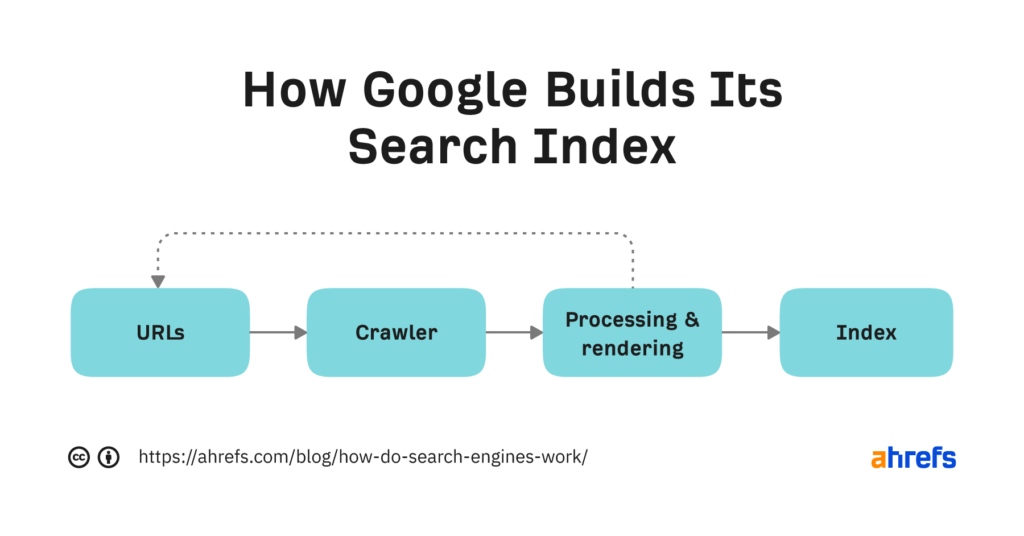Table of Contents
1. What is SEO?
Search Engine Optimization (SEO), is the process of optimizing a website to improve its visibility and ranking on search engines like Google, Bing, and Yahoo. The higher your website ranks on search engine results pages (SERPs), the more likely it is to attract organic (non-paid) traffic.
SEO involves in making specific adjustments to your website’s content, structure, and links to help search engines understand and prioritize it over others. These changes make your website more relevant, authoritative, and user-friendly factors that search engines reward with better rankings.
2. Why is SEO Important?
SEO connects searchers with the information they are looking for. Here are some key reasons why SEO matters now a days:
- Increased Visibility: Being on the first page of search results brings more visibility and more traffic and helps potential customers find your site and make an action like Call, Contact or order.
- Organic Traffic: SEO helps attract organic traffic, which is highly valuable since it’s free and based on user intent.
- Brand Credibility: Websites that rank higher are perceived as more trustworthy and credible.
- User Experience: user experience (UI/UX) is one of the ranking factors in google algo update 2022, which keeps visitors engaged and helps reduce bounce rates.
- Competitive Advantage: If your competitors are investing in SEO, you risk falling behind without it.
3. How Search Engines Work – Process

Search engines like Google, Bing, and others work by crawling, indexing, and ranking web pages:
- Crawling: Search engines use bots or spiders to crawl the internet and discover new or updated pages.
- Indexing: Once a page is discovered, it is indexed. Indexing is the process of storing and organizing the content from a webpage in the search engine’s database.
- Ranking: When a user enters a query, the search engine provides the most relevant results based on its algorithm. The higher your page ranks, the more visible it is to users.
Ranking factors include relevance, quality of content, mobile-friendliness, page speed, backlinks, and other elements that influence a search engine’s decision on which sites should appear higher in the results.
4. Key Components of SEO
To understand SEO fully, it’s essential to know its three primary components: On-Page SEO, Off-Page SEO, and Technical SEO.
a. On-Page SEO
On-page SEO refers to the optimizations you make to your website’s individual pages to improve their rankings on search engines. This involves:
- Keyword Research & Usage: Identifying the right keywords that your target audience is searching for and incorporating them into your content, meta tags, and headers.
- Content Quality: Creating valuable, engaging, and original content that satisfies user intent.
- Meta Descriptions & Title Tags: Optimizing the meta description and title tag with relevant keywords for better click-through rates (CTR).
- URL Structure: Using SEO-friendly URLs that are short, descriptive, and keyword-rich.
Example Ugly URL: https://farhankhalid.digital/pageid=1897?237292622
Example Pretty URL: https://farhankhalid.digital/digital-marketing/seo - Internal Linking: Linking to other relevant pages on your website to improve navigation and distribute link equity.
b. Off-Page SEO

Off-page SEO refers to the external actions you take outside of your website to influence your rankings. Key elements include:
- Backlinks: Acquiring high-quality, relevant backlinks from authoritative websites. Backlinks act as “references” from other sites, signaling to search engines that your content is trustworthy.
- Social Media Engagement: Sharing your content on social platforms to drive traffic and enhance visibility.
- Guest Posting: Publishing content on other websites to earn backlinks and increase exposure.
c. Technical SEO

Technical SEO focuses on optimizing the infrastructure of your website, making it easier for search engines to crawl and index your pages. This involves:
- Site Speed Optimization: Improving page load times for better user experience and rankings.
- Mobile-Friendliness: Ensuring your site is fully responsive and provides a seamless experience across all devices.
- XML Sitemap: Creating an XML sitemap to help search engines discover and index your site.
- Robots.txt: Using a robots.txt file to guide search engine crawlers on which pages they should or should not index.
5. Types of SEO
a. White Hat SEO
White Hat SEO refers to ethical and legitimate techniques that follow search engine guidelines. This includes creating quality content, optimizing for user experience, and earning organic backlinks. White Hat SEO is focused on long-term growth.
b. Black Hat SEO
Black Hat SEO involves manipulative techniques that violate search engine guidelines, such as keyword stuffing, cloaking, and using private link networks (PBNs). While Black Hat methods may provide quick results, they often result in penalties and can damage your site’s reputation.
c. Gray Hat SEO
Gray Hat SEO falls somewhere between White and Black Hat SEO. It includes practices that are not outright banned by search engines but are risky. Examples include buying expired domains for link-building purposes or using spun content.
6. SEO Ranking Factors

Search engines use hundreds of factors to rank websites, but the following are some of the most significant:
- Content Relevance: Your content must be valuable, relevant, and high-quality.
- Backlinks: Quality backlinks from reputable sites boost your site’s authority.
- Mobile Optimization: Sites that are mobile-friendly rank higher due to the increase in mobile searches.
- Page Speed: Faster loading times improve user experience and contribute to better rankings.
- User Engagement: Metrics like time on page, bounce rate, and CTR signal to search engines how useful your content is.
- Domain Authority: Older domains with consistent backlinks and quality content tend to perform better in SERPs.
- Technical Factors: Elements such as structured data, HTTPS security, and schema markup also impact rankings.
7. SEO Tools
To succeed in SEO, using the right tools is critical. Some of the most popular SEO tools include:
- Google Analytics: Tracks website traffic and user behavior.
- Google Search Console: Provides insights into how Google indexes and ranks your site.
- Ahrefs: An all-in-one SEO tool for keyword research, backlink analysis, and competitor tracking.
- SEMrush: Offers insights into keyword rankings, content optimization, and site audits.
- Moz: Focuses on keyword research, link-building opportunities, and SEO performance tracking.
- Yoast SEO (for WordPress): A plugin that helps optimize on-page SEO elements such as meta tags and internal linking.
8. Common SEO Mistakes to Avoid
- Keyword Stuffing: Overusing keywords in your content can lead to penalties from search engines.
- Ignoring Mobile Optimization: With mobile searches surpassing desktop searches, having a non-responsive site will hurt your rankings.
- Poor Content Quality: Focusing too much on keywords and not enough on delivering valuable content will deter users and hurt your SEO.
- Not Tracking Performance: Failing to monitor SEO performance means you can’t make necessary adjustments for improvement.
- Neglecting Technical SEO: Overlooking site speed, crawlability, and other technical factors can lead to poor rankings even if your content is optimized.
9. SEO Trends for 2024
- AI & Machine Learning: Search engines are increasingly using AI to deliver personalized search results. AI-powered tools like Google BERT and GPT are influencing SEO practices by improving the way content is understood.
- Voice Search Optimization: With the rise of voice-activated devices, optimizing for voice queries is becoming essential.
- E-A-T (Expertise, Authoritativeness, Trustworthiness): Google continues to prioritize content that demonstrates expertise, authority, and trustworthiness, especially for YMYL (Your Money Your Life) pages.
- Core Web Vitals: Page experience signals, such as loading speed, interactivity, and visual stability, are becoming critical ranking factors.
- Video SEO: Video content is booming, and optimizing for video platforms like YouTube is increasingly important.
10. Final Thoughts
SEO is an ever-evolving field that requires ongoing effort, strategy, and attention to detail. While it can be complex, mastering SEO can significantly improve your website’s visibility, attract more organic traffic, and ultimately lead to greater business success.
Whether you’re just starting out or looking to refine your strategy, understanding the fundamentals of SEO and staying updated on trends will help you achieve your online marketing goals.
Need help optimizing your website? Contact me, Farhan Khalid, for personalized SEO strategies that drive results!


Leave a Reply